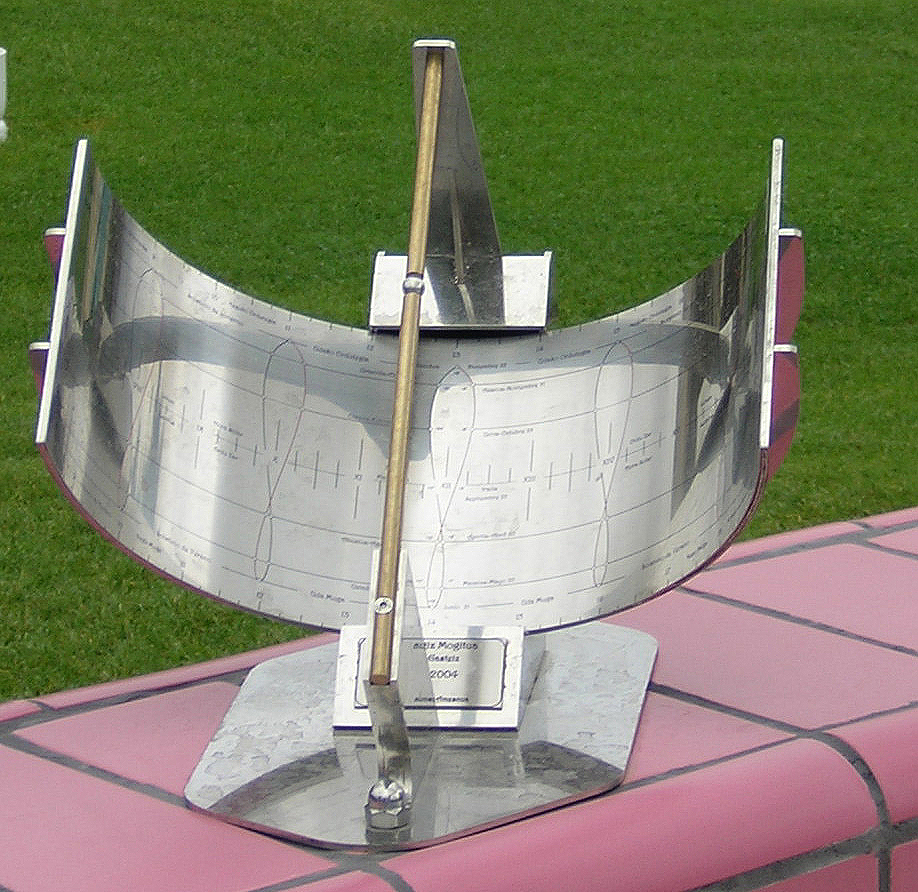Basque ethnography at a glance

Equatorial sundial at Fundación Estadio Fundazioa in Vitoria-Gasteiz. José Ignacio Domínguez.
Of the numerous ways to define a sundial, and after extensive reading on the subject, I consider particularly interesting the definition given by Miquel Palau in his book Rellotges de sol [Sundials], which would translate as follows: ‘A sundial is the materialization of an ingenious idea, so simple it is surprising. It consists of a shadow that moves in the opposite direction to the apparent motion of the sun and aligns with conveniently arranged hour lines’. Nevertheless, the reality of such devices, and a little reflection, shows the art of constructing and using sundials is not quite as straightforward as the definition suggests. As a matter of fact, ancient sundials were not so much the outcome of craftsmanship but of multiple and complex studies. Many people who still today attempt to build sundials without understanding their basic principles rapidly realize their effort is not compensated. It continues to be really remarkable how such a relatively simple instrument can register variations in the earth’s rotation so accurately.
So all is needed to tell the time of day is a surface and a shadow cast upon it. There are therefore a great variety of sundial designs: vertical, horizontal, equatorial —which plane is parallel to the equator—, spherical, cylindrical…, to name but the most frequently seen on walls and in parks. Some dials from the Middle Ages were not used for astronomical timekeeping but to indicate the canonical hours and became extensive along the Way of St James in Spain.
In the Basque Country we have some artistically undeveloped sundials. The two existing sundials at Arraibi House in Durango (Bizkaia) might well be the most attractive in that regard, with the particularity that both have the same design. As for dials marked with prayer times rather than or in addition to the standard hours of daylight, it is at churches and hermitages in the province of Álava where they most abound.
Sundials reached their peak in the 16th and 17th centuries and were used to correct the time shown by mechanical clocks, which back in the day were still built with poor quality materials and thus suffered high wear and tear due to changes in temperature.
Industrialization and the development of communication technologies would later lead to the adoption of a primary time standard by which all countries regulate clocks and times, namely the so-called Coordinated Universal Time (abbreviated to UTC).
José Ignacio Domínguez – Etniker Álava – Etniker Euskalerria Groups
Translated by Jaione Bilbao – Ethnography Department – Labayru Fundazioa
Reference for further information: José Ignacio Domínguez. Relojes de sol en el territorio histórico de Álava y Treviño [Sundials in the historic territory of Álava and Treviño]. Ohitura, 12.


